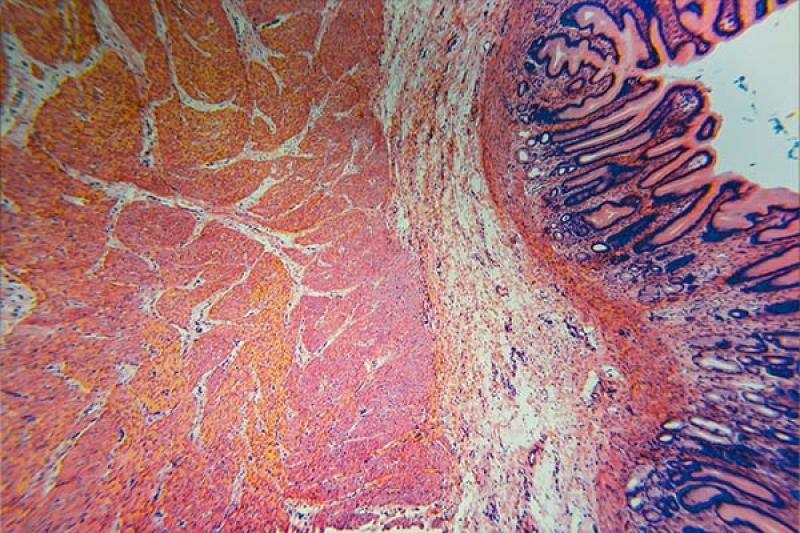Advancing Rare Melanoma Research
27 December 2021 | Science

Despite the tremendous progress made in the last decade in treating melanoma, approximately one third of patients don’t benefit from currently approved therapies. This includes the majority of people with rare forms of melanoma — melanomas that develop in the eye, nailbeds, palms, soles of the feet, and various mucosal membranes. Patients facing these subtypes tend not to respond as well to current treatments as patients with cutaneous melanomas that arise on sun-exposed skin. But as investigators continue to chip away at understanding what causes these melanomas and how they differ from UV-driven cutaneous melanomas, the hope is the better understanding they reap will be sown into improved treatments for these patients. Researchers explored both the challenges and the opportunities for rare melanoma research at the 2021 MRA Scientific Retreat.
New Insights Into the Genetics of Acral Melanoma
Keiran Smalley of H. Lee Moffitt Cancer Center and Research Institute and his MRA-funded team hope to find a genetic ‘smoking gun’ of what causes acral melanoma, a rare subtype of melanoma that develops on the palms, soles of feet, or under finger or toe nails, and comprises about two to three percent of all melanomas. The researchers assumed that, like many cutaneous melanomas, acral melanomas evolve from moles whose growth goes awry due to a series of specific genetic flaws. But this didn’t prove to be so for most of the tissues they analyzed when the researchers genetically compared benign moles from acral sites (feet, hands) to that of acral melanoma tumors. “This surprised us because it suggests it is unlikely that acral nevi [moles] are likely to be the precursors for the majority of acral melanomas,” Smalley said.
Digging deeper, they then mapped out the genetic landscapes of nine acral melanoma samples and found tremendous variability in the genetic material and the ways in which cell functions were altered. Unfortunately, no distinctive genetic signature was found among the samples that could provide a specific target for a drug that might be effective for patients with this rare melanoma. However, the researchers did find a group of genes with altered activity shared among most of the samples. The researchers also noted fewer and less active immune cells in the acral melanoma tumor samples compared to samples from cutaneous melanoma. This suggests that acral melanoma is less likely to spark an immune response and may explain why many patients with this subtype often do not respond to checkpoint immunotherapy, Smalley noted.
Titia de Lange of Rockefeller University, Marcin Imielinski of Weill Cornell, and their research team also found a tremendous amount of variability in the genetic landscape of the acral melanoma samples they studied. Many of these genetic alterations were due to major disruptions in genetic material, akin to typhoons creating piles of genomic wreckage, which break up the chromosomes and reattach the genes on them in new ways. These genetic disruptions are quite different from the smaller number of consistent and more pinpoint genetic changes often seen in cutaneous melanoma on sun-exposed skin. But because of the jumbling and multiplication of genetic material that often occurs after these chromosomal catastrophes, they likely trigger production of new proteins (antigens). The immune system can recognize some of these new tumor antigens and attack the cells that have them when stimulated by checkpoint immunotherapy, the researchers speculate. They suggest that molecular markers for these types of chromosomal disruptions, if present in patients’ tumors, might indicate whether they are likely to respond to such treatments.
UV-Driven Melanomas Extend Beyond the Skin
Richard Marais of the Cancer Research UK Manchester Institute reported on a new discovery that suggests that a subgroup of mucosal melanoma patients could respond to checkpoint immunotherapies or targeted therapies. Most mucosal melanomas arise in areas of the body not exposed to the sun, so lack the telltale genetic changes caused by ultraviolet radiation (UVR) induced DNA damage that are thought to contribute to responsiveness of these melanomas to checkpoint blockade. Mucosal melanomas are also not generally considered to be eligible for BRAF plus MEK inhibitors. However, Marais has found that melanomas arising in the mucosal membrane that covers the eye and lines the inside of eyelids have the distinctive signature common to sun-induced common cutaneous melanoma. These mucosal melanomas also had a high mutation burden and a high incidence of BRAF mutations, suggesting that they are likely to respond to the therapies approved for common cutaneous melanoma. Quoting Nick Hayward’s data, Marais noted that uveal melanomas arising on the iris also bear the telltale genetic signature of sun-induced DNA damage, suggesting that these melanomas may also respond to checkpoint immunotherapies.
“This makes us start to think about basic concepts in how melanoma is driven,” Marais said, pointing out that the data suggests that melanoma is driven by distinct processes in different parts of the body, but that UVR imprints additional events over the baseline processes to accelerate melanoma development. “We need to apply these findings to develop new treatments for rare melanomas, because responses are driven by the underlying genetics rather than by the tissue of origin” Marais noted, concluding that these findings reinforce public health messages about the importance of protecting the eyes from UVR.
